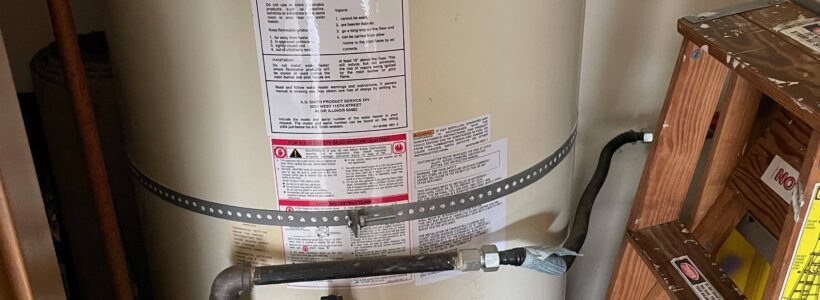Electric Water Heater
1. You Have a Tripped Breaker
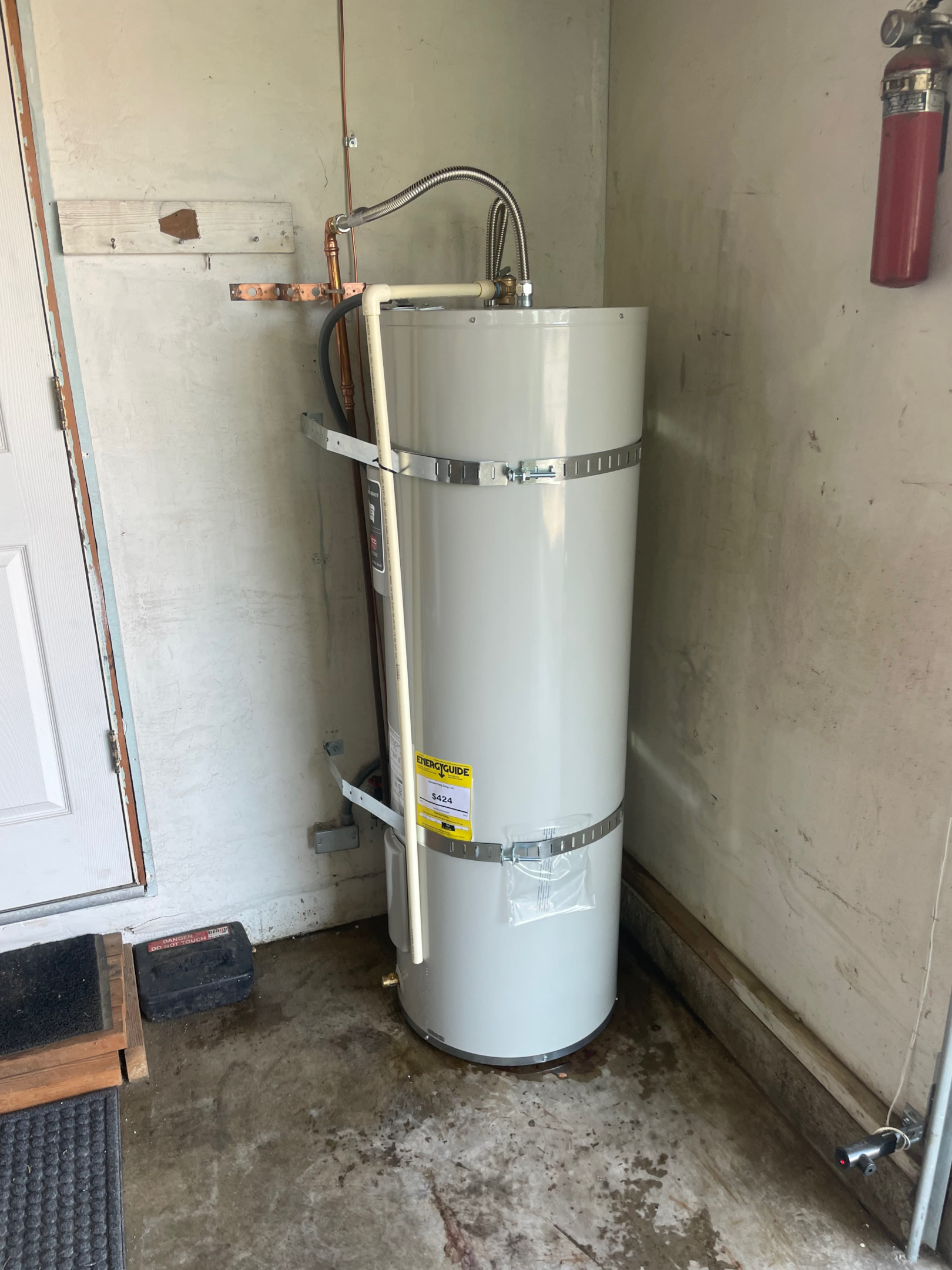
A tripped circuit breaker can cause your electric heater for water to not heat water properly enough. Checking your breaker box is the first step in attempting to diagnose an issue. Without proper power your heater may have a short lived supply but won’t be able to deliver hot water for long.
Water Heater Breaker
Your electric water heater also has a breaker on it. Usually, it will be located on the upper thermostat and can pop if your water heater is ungrounded. Once your breaker trips the tank water will gradually fade from warm water gradually cool down to cold water
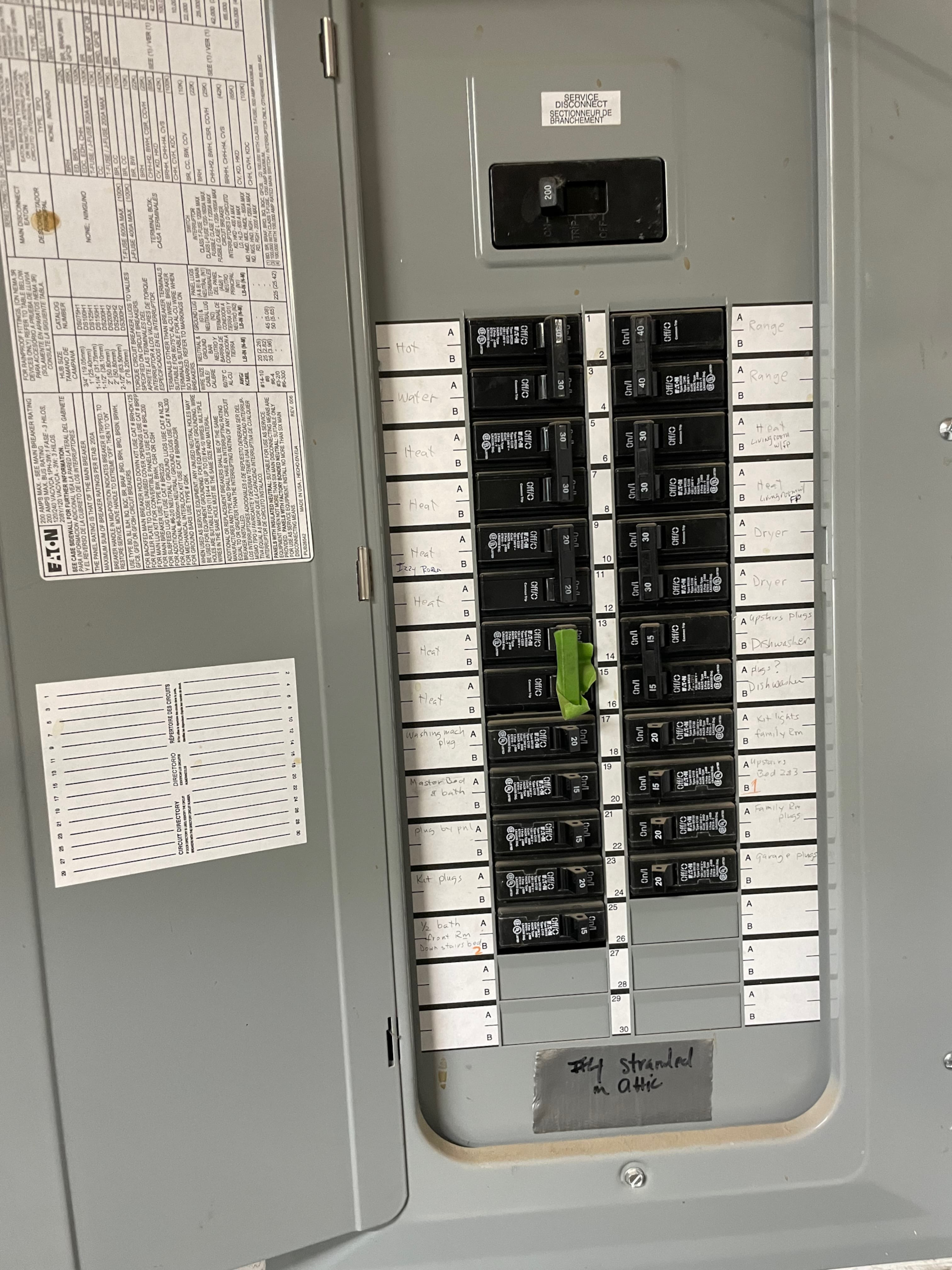
2. Faulty Thermostat
The thermostat on your electric water heater can give inaccurate readings and prevent your whole water heater tank from heating properly during the heating process. Check the temperature settings, as well as the wiring inside your unit.
Loose Wiring or Connections
Loose wiring and connections are a common issue with electric water heaters and can cause them to not be water heaters correctly. You should check all wires.
3. Your Thermostat Is Set Incorrectly

If you have an electric water heater, the thermostat may be set too low or too high. You need to make sure it is set at the right temperature in order for your water heater to heat properly.
The thermostat is set too high
If the thermostat is set too high and your water supply or your incoming water is “heavy” the minerals tend to build up and cause it to overwork and quickly drain the service life. If this happens thermostat needs to be replaced. The standard temperature setting is 120º and most plumbers won’t change that unless specifically asked by the customer.
The thermostat is set too low
An incorrectly set thermostat, one that is set too low, will not necessarily need to be replaced but can simply be turned up as long as it’s still working correctly. There are two thermostats typically on an electric hot water tank. These thermostats are commonly the cause for lukewarm or hot water heaters, as they are the ones that regulate the water temperature.
4. A Broken Heating Element
A heating element is connected to the thermostat and is the actual device used to heat water. If the heating element has gone bad, then it will not be able to properly heat your water. This is an electrical problem usually caused by a buildup of sediment or a poor connection to the thermostat.
The element can also burn itself out over time and is considered a consumable part. It’s important to test using a multi-meter.
Multiemeter testing can be done to most components on your electric tank water heater and can give you important information.
A common heating element problem
If your water heater tank has it’s water level drop below the heating element for an extended period your immersion heater and heating elements can burn themselves up.
5. One of Your Electrical Heating Elements Is Faulty
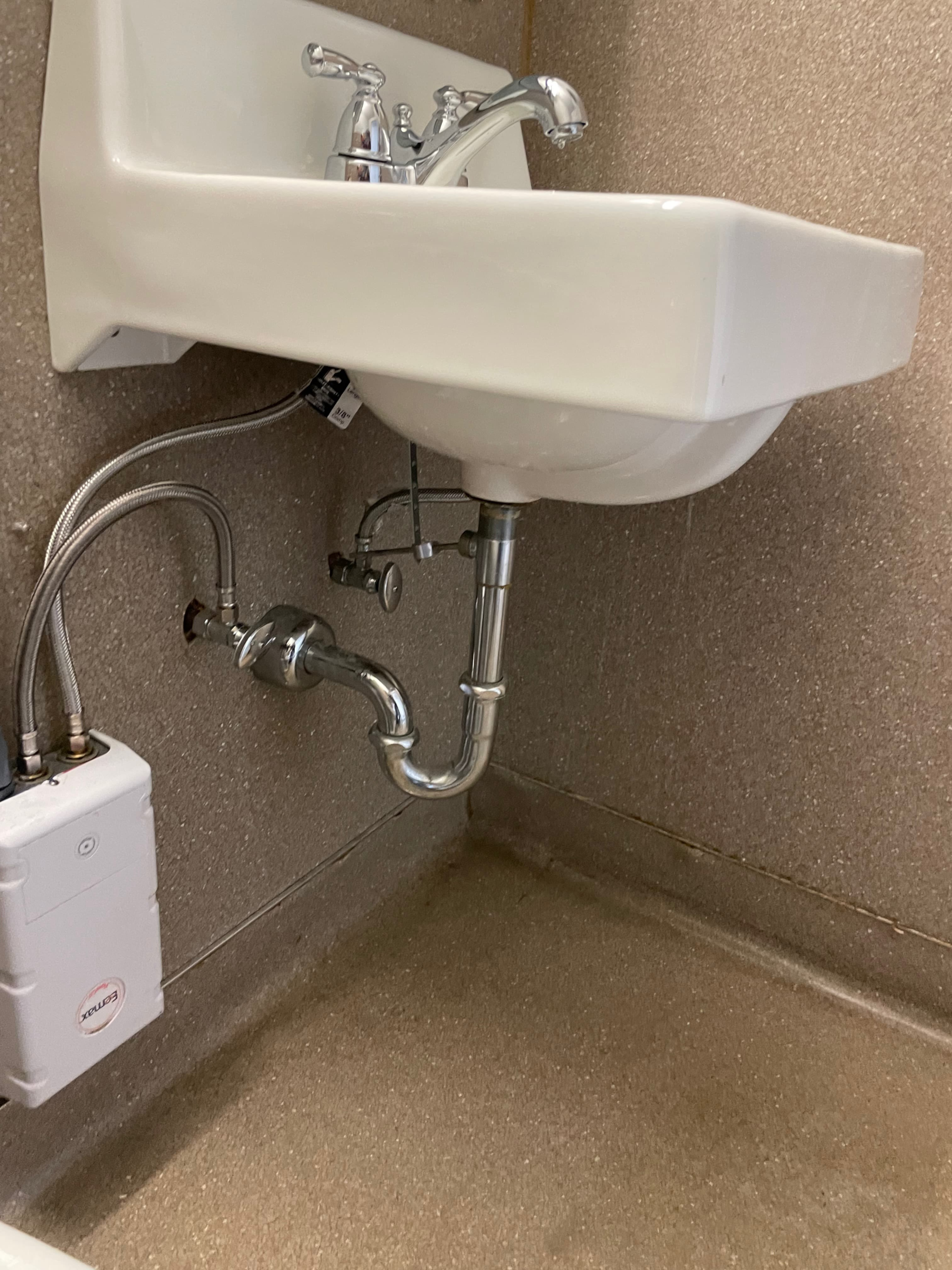
If you have an electric water heater, there are two heating elements that help to heat your water. If one of these heating elements is faulty, then it can result in lukewarm water or even completely cold water coming from your faucets. This requires a professional repair as the entire heating element needs to be replaced.
When a heating element is fault it’s best practice to replace all other thermostats and elements on the heater so you don’t have any one part working hard or differently than the rest.
6. Sediment Is Affecting the Heating Element
Sediment build up is a very common problem with a tank water heater. This sediment forms at the bottom of the tank, preventing your heating element from properly transferring heat to the water. As a result, you may begin experiencing lukewarm or cold water when running your faucets. The best way to prevent this from happening is to regularly flush out any sediment that forms
7. Sediment build up in the tank
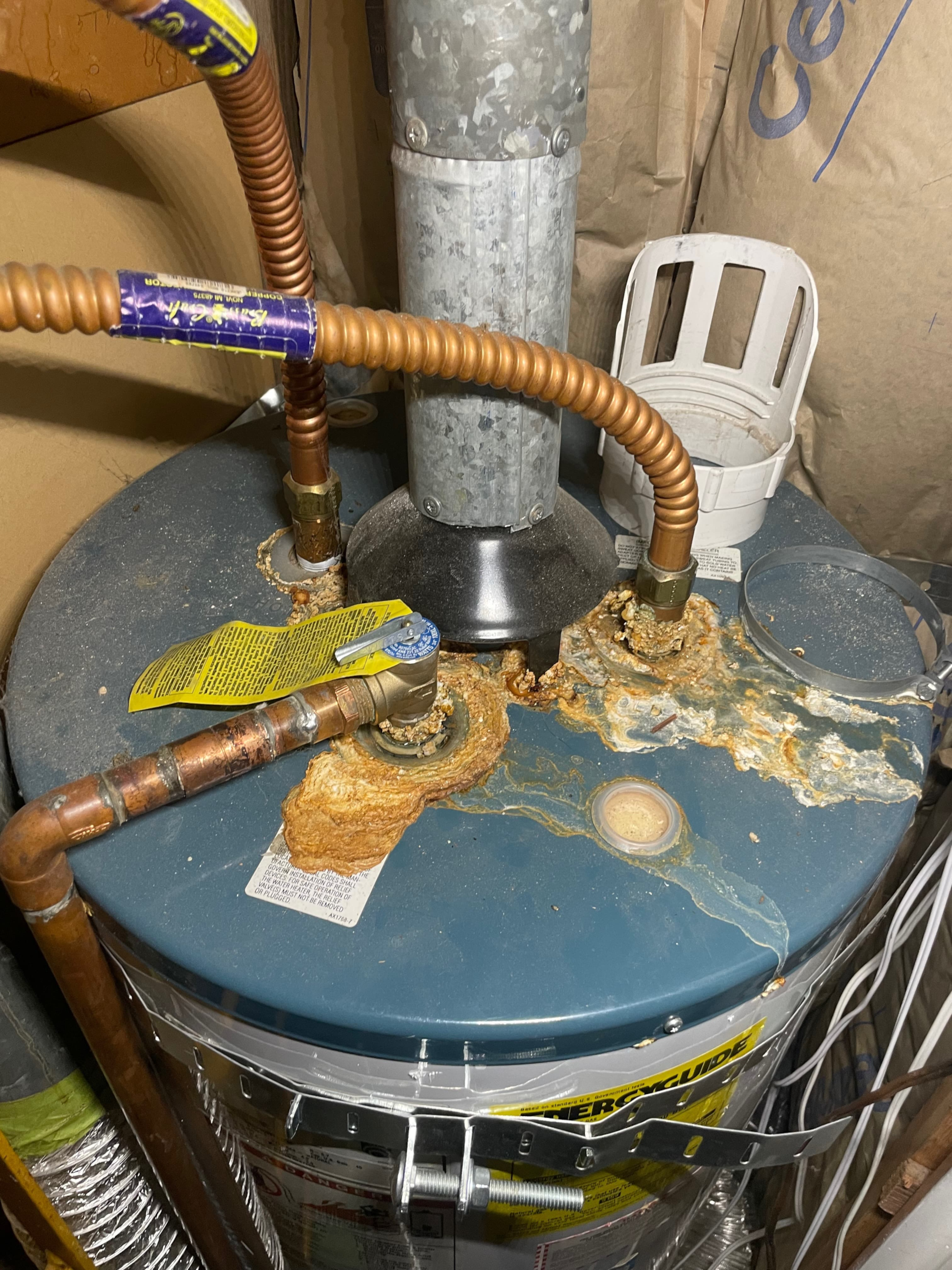
Sediment can also build up in the tank and cause a restriction of water flow. This will reduce the amount of hot water that is able to be produced, resulting in lukewarm or cold water coming from your faucets. The best way to prevent this issue is to regularly flush out.
8. Mineral Buildup
If your water heater has been around for a while, then mineral buildup is likely to be the cause of your well producing lukewarm water or cold water. This happens when the minerals in the water become trapped on the heating element and form a layer. This reduces its ability to properly heat the water, resulting in lukewarm or cold water coming from your faucets. The only way to remedy this issue is to flush out the water heater and replace the anode rod. This will help remove any built-up minerals.
9. The Dip Tube Is Damaged
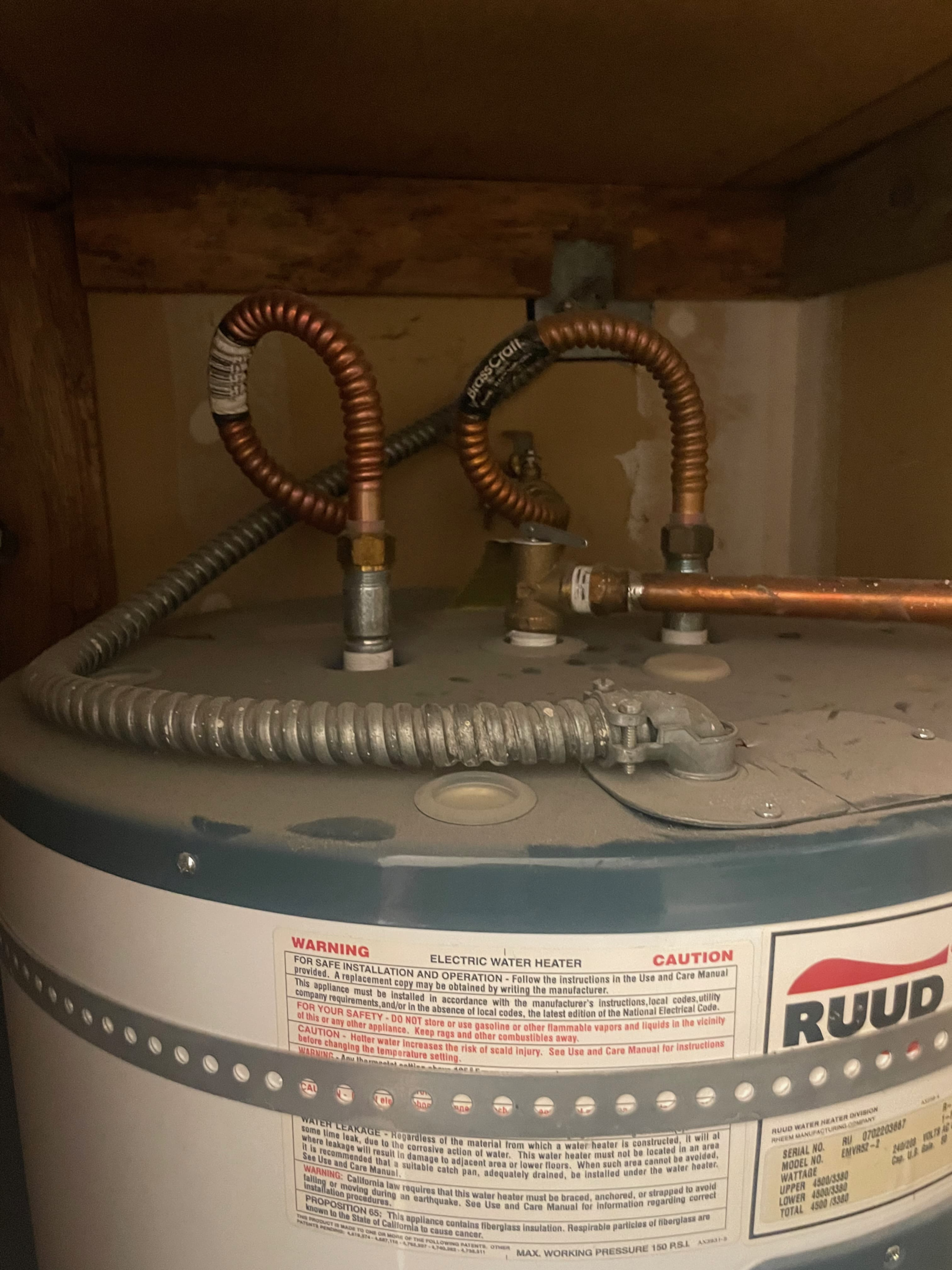
The dip tube is responsible for carrying cold water from the top of the tank and into the bottom. If this becomes damaged, then it will cause all of the cold water to become mixed with hot water resulting in lukewarm water heaters or cold water coming from your faucets. This requires a professional repair as the entire dip tube needs to be replaced.
Hot water tank – hot – broken dip tube
The hot side dip tube can also break off from its dip tube channels and limit the amount of water able to reach your hot water supply. A broken dip tube could result in lukewarm water, no hot water, or hot water flowing like regular. It’s very dependent on where it breaks.
10. Leaking Water Heater
A leaking water heater can also be the cause of your lukewarm or cold water. If there is a small leak in the tank, it will allow cool water to enter and mix with the hot water, resulting in lukewarm or cold water. This requires a professional repair as they will need to repair or replace the entire tank. Leaks can also happen at the bottom of the tank due to the pressure relief valve. This is a safety measure that will relieve excess pressure from the tank if it gets too high.
A leaking water tank
A problem that should be addressed as soon as possible. If left untreated, the leak can cause damage to your home and even result in property flooding. A leak is extremely dangerous on a home plumbing system if it’s not addressed quickly because it can get very costly very quickly.
Other Reasons your water won’t get very hot.
If the thermostat on your hot water tank is not set to the correct temperature, it can cause lukewarm or cold water. This is because it won’t heat up enough to reach a higher temperature. The same goes for an undersized hot water tank, this means that there is not enough capacity in the tank to provide enough hot water when needed.
Hot Water Heater is Too Small
If your hot water tank is too small, then it won’t be able to keep up with the demand for hot water. This means you will have lukewarm or cold water coming from the tap no matter how high you set the thermostat. The solution here is to upgrade to a larger-capacity hot water heater so that it can keep up.
One option not yet available for electric water heaters, if you’re looking to conserve energy is, a tankless water heater. The current lineup is really inefficient and costly.
Mixing Valve is set too low
The mixing valve might also be set too low, this allows less hot water to enter the system and causes lukewarm or cold water. The solution here is to adjust the mixing valve so that it allows more hot water in and can reach a higher temperature.
Clogged Hot Water Pipes
Supply pipes are too small
If the supply pipes are too small, they won’t be able to provide enough hot water when needed and this causes lukewarm or cold water. The solution here is to replace the existing pipes with larger-diameter ones so that more hot water can flow through them.
Other common problems with lukewarm water
- clogged fixtures
- low or faulty power supply
- defective cartridges.
Problems you wont have to worry about with electric heater
Calling the gas company
a rotten eggs smell
gas pressure problems
gas leak
natural gas line
gas valves
or anything else associated with a gas water heater

